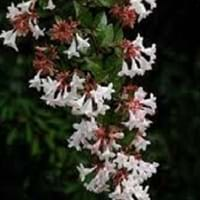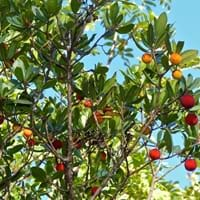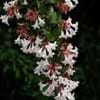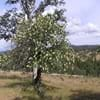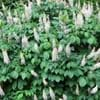Life Span
Annual
Perennial
Origin
Mexico, Central Asia, Eastern Asia
Mediterranean
Types
Mardi Gras
Kaliedoscope
Edward Goucher
Prostrata
Not Available
Number of Varieties
Not Available
Habitat
gardens, Homesteads, Roadsides, Woods
limestone outcrops, Rocky areas, Woodlands
USDA Hardiness Zone
Not Available
8-9
Sunset Zone
Not Available
8, 9, 14, 15, 16, 17, 18, 19, 20, 21, 22, 23, 24
Habit
Oval or Rounded
Upright/Erect
Minimum Height
Not Available
Minimum Width
Not Available
Flower Color
Not Available
White, Light Pink
Flower Color Modifier
Not Available
Bicolor
Fruit Color
Tan
Yellow, Red
Leaf Color in Spring
Not Available
Dark Green
Leaf Color in Summer
Not Available
Dark Green
Leaf Color in Fall
Not Available
Dark Green
Leaf Color in Winter
Not Available
Dark Green
Leaf Shape
Ovate
Orbiculate
Plant Season
Not Available
Spring, Summer, Fall, Winter
Sunlight
Full Sun, Partial Sun
Full Sun, Partial Sun
Type of Soil
Clay, Loam, Sand
Loam, Sand
The pH of Soil
Acidic, Neutral
Acidic, Neutral
Soil Drainage
Well drained
Well drained
Bloom Time
Not Available
Spring, Late Spring, Early Summer, Summer, Late Summer, Early Fall, Fall, Late Fall
Tolerances
Not Available
Drought
Where to Plant?
Ground, Pot
Ground
How to Plant?
Grafting, Stem Planting
Seedlings
Plant Maintenance
Medium
Medium
Watering Requirements
Requires regular watering
Requires regular watering
In Summer
Lots of watering
Lots of watering
In Spring
Moderate
Moderate
In Winter
Average Water
Average Water
Soil pH
Acidic, Neutral
Acidic, Neutral
Soil Type
Clay, Loam, Sand
Loam, Sand
Soil Drainage Capacity
Well drained
Well drained
Sun Exposure
Full Sun, Partial Sun
Full Sun, Partial Sun
Pruning
Prune if you want to improve plant shape, Prune to control growth, Remove damaged leaves, Remove dead leaves
Prune in early spring, Prune in late winter, Remove damaged leaves, Remove dead branches, Remove dead leaves
Fertilizers
All-Purpose Liquid Fertilizer
All-Purpose Liquid Fertilizer
Pests and Diseases
Red blotch
Red blotch
Plant Tolerance
Drought
Drought
Flower Petal Number
Single
Single
Foliage Texture
Medium
Medium
Foliage Sheen
Glossy
Glossy
Self-Sowing
Not Available
No
Attracts
Not Available
Hummingbirds
Allergy
Not Available
Hay fever, Oral Allergy, Skin irritation
Aesthetic Uses
Showy Purposes
Beautification, Showy Purposes
Beauty Benefits
Not Available
Not Available
Environmental Uses
Air purification
Air purification
Medicinal Uses
Not Available
Antioxidants
Part of Plant Used
Not Available
Fruits
Other Uses
Showy Purposes
Traditional medicine, Used As Food, Used as Ornamental plant, Used for its medicinal properties
Used As Indoor Plant
Yes
Yes
Used As Outdoor Plant
Yes
Yes
Garden Design
Foundation, Hedges
Shade Trees, Street Trees
Botanical Name
ABELIA mosanensis
ARBUTUS 'Marina'
Common Name
Glossy abelia
Marina Strawberry Tree, Strawberry Tree
In Hindi
Abelia
झरबेरी पेड़
In German
Abelia
Erdbeerbaum
In French
Abelia
arbousier
In Spanish
Abelia
Árbol de fresa
In Greek
Αμπέλια
φράουλα δέντρο
In Portuguese
Abelia
medronheiro
In Polish
Abelia
Strawberry Tree
Phylum
Magnoliophyta
Magnoliophyta
Class
Magnoliopsida
Magnoliopsida
Order
Dipsacales
Ericales
Family
Caprifoliaceae
Ericaceae
Clade
Angiosperms, Asterids, Eudicots
Angiosperms, Asterids, Eudicots
Tribe
Not Available
Not Available
Subfamily
Caprifolioideae
Not Available
Number of Species
Not Available
Properties of Abelia and Strawberry Tree
Wondering what are the properties of Abelia and Strawberry Tree? We provide you with everything About Abelia and Strawberry Tree. Abelia doesn't have thorns and Strawberry Tree doesn't have thorns. Also Abelia does not have fragrant flowers. Abelia has allergic reactions like Not Available and Strawberry Tree has allergic reactions like Not Available. Compare all the properties and characteristics of these two plants. Find out which of these plant can be used as indoor plant. If you are interested to decorate your house and garden, find out aesthetic uses, compare them and select the plant which will beautify your surrounding. Along with beautification, try comparing medicinal and edible uses of Abelia and Strawberry Tree and you can choose the plant having best and most benefits.
Season and Care of Abelia and Strawberry Tree
Season and care of Abelia and Strawberry Tree is important to know. While considering everything about Abelia and Strawberry Tree Care, growing season is an essential factor. Abelia season is Not Available and Strawberry Tree season is Not Available. The type of soil for Abelia is Clay, Loam, Sand and for Strawberry Tree is Loam, Sand while the PH of soil for Abelia is Acidic, Neutral and for Strawberry Tree is Acidic, Neutral.
Abelia and Strawberry Tree Physical Information
Abelia and Strawberry Tree physical information is very important for comparison. Abelia height is Not Available and width Not Available whereas Strawberry Tree height is 1,220.00 cm and width 610.00 cm. The color specification of Abelia and Strawberry Tree are as follows:
Abelia flower color: Not Available
Abelia leaf color: Not Available
Strawberry Tree flower color: White and Light Pink
- Strawberry Tree leaf color: Dark Green
Care of Abelia and Strawberry Tree
Care of Abelia and Strawberry Tree include pruning, fertilizers, watering etc. Abelia pruning is done Prune if you want to improve plant shape, Prune to control growth, Remove damaged leaves and Remove dead leaves and Strawberry Tree pruning is done Prune in early spring, Prune in late winter, Remove damaged leaves, Remove dead branches and Remove dead leaves. In summer Abelia needs Lots of watering and in winter, it needs Average Water. Whereas, in summer Strawberry Tree needs Lots of watering and in winter, it needs Average Water.
